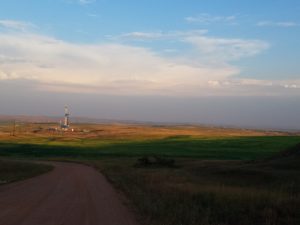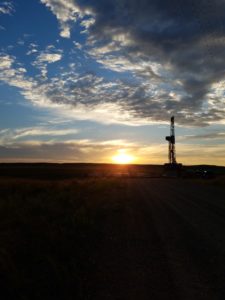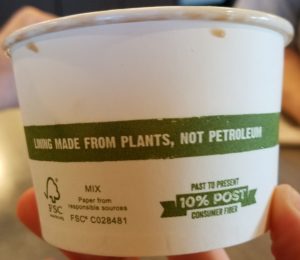After being off for five days I can finally sit down and write about the last week of the well. I can say this for the new job: it is definitely faster passed.

One of the questions I get asked the most once people find out I work on an oil rig is “How deep do you guys drill?” quickly followed up with something along the lines “That’s not all straight down is it?”. The answer is far from simple. In this new to me basin or oil patch the formations are much, much, deeper than what I am use to. There are 2 different pay zones as well. The shallow one is the Middle Bakken. Depending on where in the state you are it can be anywhere from 9,000’ to 13,000’ strait down. (Just for reference 2 miles is 15,600 feet.) Most people have heard of the Bakken Shale. But I can now say that I have seen it. It’s a much larger formation and there are inter bedded silt stones and shale stones. The silt is easier to drill but the shale is where the good oil is at. The way they are doing most wells now is to drill the siltstone and then frack into the shale. So that’s what we did on this well. We drilled down two miles (building the curve as we went) and then drilled a ‘two section lateral’, fancy term just means we drilled sideways for two miles because we had the mineral rights to two of the mile by mile sections.
The truly new part of my job came when we finally started drilling sideways. In the other places I’ve worked the formations have been very thick and forgiving. That is not the case in North Dakota. We were targeting a very small window of only about 10 vertical feet. On either side of this narrow window is shale. Shale is bad in this case, very bad. We do not want to hit the shale so we have to constantly readjust the angle we drill at so as not get out of zone. Think of trying to push a pencil through the filling layer of a layer cake without hitting the cake; but you don’t know if the cake is on a level plate or if half of it is tilted this way or that. It’s my job to make sure we stay in the filling even when the bit is two miles below the prairie and 2 miles away from the rig. No pressure.
This well went smoothly and we didn’t have any problems. The formations where not flat like a layered cake but we managed to stay right on track. A few ups and downs but that’s why they have us on location so we can tell everyone in real time what is changing. I was very shocked with how fast we drilled the horizontal. To drill over 15,000’ it took us two and a half days. That’s it! That may not seem shocking but just realize that in 2014 that would have taken 35 days. There is nothing particularly special that we do now verses then. They just have figured out what works. The right drill bit and mud motor combination makes a huge difference. Finding the right spot in the formation never hurts too.

After such a fast wrap up I drove for two days across Montana and am now relaxing in my hammock in Vancouver. I expect to be called back to work at any time but for now it’s time to cram as much summer in as I can stand!

